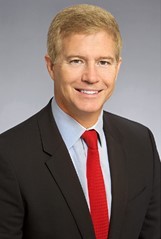Jan 6
2023
Technology Will Make The Care Team Evolution Possible In 2023

By Frank Harvey, CEO, Surescripts.
Healthcare faces daunting challenges and uncertainty as we look to the future. But we know one thing to be true: passionate advocates across the industry are working each day to improve the delivery of patient care.
Provider burnout, staffing shortages, inflation and economic uncertainty will force a shift in how care is provided. As a result, in 2023 we will see patient care teams evolve dramatically.
When I began my career as a community pharmacist 30 years ago, the telephone was the pinnacle of technology supporting how we filled prescriptions. Since then, electronic prescribing has helped prescribers and pharmacists step away from the phone and in 2021, Surescripts processed more than 2 billion prescriptions electronically.
This technology puts patient intelligence at prescribers and pharmacists’ fingertips, helping make better informed care decisions alongside their patients while eliminating time-consuming manual processes.
Despite these innovations, the COVID-19 pandemic uncovered gaps that remain in pharmacist and prescriber workflows, including burdensome administrative tasks that we know are contributing to concerning levels of provider burnout and driving costs sky-high.
Our responsibility is to make sure the health technology that exists today is effective in eliminating inefficiencies that contribute to burnout and is focused on supporting evolving patient care teams.
Burnout is real and health technology reduces burdens and improves patient care
Healthcare professionals are facing intense burnout and are leaving their roles at alarming rates. The result is a dramatic workforce shortage, pushing the cost of care higher. A 2021 study found that 1 in 5 physicians and two in five nurses intended to leave their practice within two years and a survey of health system pharmacies found that 89% needed to use pharmacists to take on pharmacy technician duties, and 48% had to reduce pharmacy services due to the shortage.
While the causes of burnout run the gamut, there are clear and achievable ways technology can eliminate the time-consuming administrative burdens that prevent clinicians from doing what they do best: care for their patients.
We also know that clinical judgment is only part of the equation when caring for a patient. When a patient gets to the pharmacy and learns they can’t afford the medication prescribed to them, they either abandon it or the pharmacist may go back to the provider for an alternative and the process starts over.
Ultimately, the most expensive medication is the one a patient never picks up and never takes.
But through ongoing innovation and collaboration, we are arming providers with information, helping them to identify and prompt conversations about medication costs with patients up front, we are giving them time back to consider the whole person in their care.
The result? Providers are spending less time spent on disruptive phone calls and faxes doing rework and we are seeing improved medication adherence by those in their care.
Care teams are evolving – pharmacists are trusted, accessible and ready to fill the gaps
The COVID-19 pandemic put pharmacists at the center of care for many patients. Providing vaccinations and doing limited prescribing during this time has helped build patient trust in their pharmacists’ ability to deliver a greater level of clinical care.
The reality is that community pharmacies are now central to many patients’ healthcare routines. And when nine in ten?Americans live within five miles of a pharmacy, it makes sense that in 2023, pharmacists will play a larger role as part of the care team.
Patients have stronger relationships with their pharmacists than other providers according to one analysis of high-risk patients that found they visited their community pharmacy an average of 35 times per year, compared to four visits to their primary care provider and nine visits to specialists.
Pharmacists today are also better trained in clinical care, with more than half of licensed pharmacists in the U.S. who are doctors of pharmacy.
With Surescripts technology eliminating time-consuming administrative tasks, combined with restored patient trust and clinically trained pharmacists who want to work at the top of their license, they are equipped to fill the gaps, supporting care teams in managing diseases like diabetes, hypertension or multiple comorbidities.
What’s next?
Pharmacists have proven they can fill the gaps in care resulting from widespread provider burnout, but we need to see policy changes and additional technology solutions that allow pharmacists to perform these important activities and be reimbursed for their work.
At Surescripts, we will continue to focus on supporting providers, including pharmacists, by ensuring access to the right clinical patient information at the right time, allowing them to do what they do best – care for their patients.